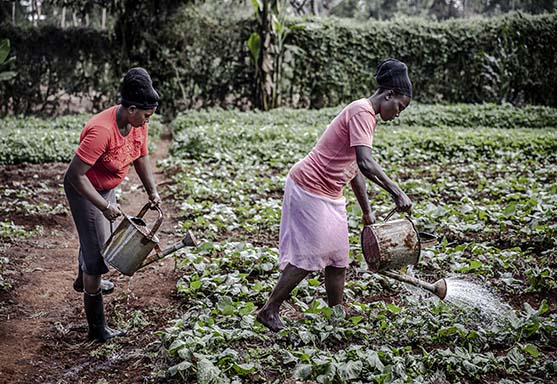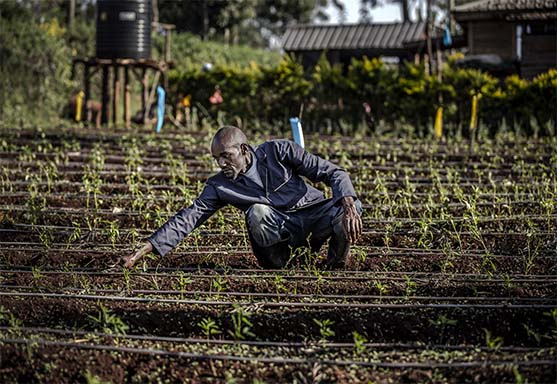FAO and migration
Migration is intimately linked to the work of FAO. With its mission of ending food insecurity and malnutrition, eliminating poverty and promoting the sustainable management of natural resources, FAO is uniquely placed to support countries in addressing the rural dimensions of migration, its implications for rural populations and its impact on the future of agriculture and food systems.
Working with governments, UN agencies, academia, the private sector, civil society, migrants and diaspora associations, and local communities, FAO is expanding on its work to strengthen the positive contribution that migrants are making to rural development and ensure safe, orderly and regular migration.
Migration, rural development and resilience
Migration should be a choice, not a necessity. International cooperation should work to make sure that people in rural areas are resilient to threats and crises, have access to sustainable livelihood opportunities and live in peace and prosperity in their homelands. This is key to address the adverse drivers of migration such as conflicts, natural and human-made crises, rural poverty, food insecurity, inequality, unemployment, lack of social protection as well as environmental degradation and climate change.
Migration brings both opportunities and challenges to agriculture and rural communities. When migration occurs, migrants and their families, as well as communities at origin and destinations, need to be supported in maximizing the benefits of migration. Promoting the investment of remittances, mobilizing migrants and diaspora, facilitating the transfer of knowledge and skills, supporting the sustainable reintegration of returnees, and facilitating migration as an adaptation strategy to climate change are key elements to harness the opportunities associated with migration.
In many places, migrant workers are essential for food systems, employed in planting to harvesting, but also in distribution and processing, often seasonally. However, rural areas of origin may be challenged by the loss of productive work force, with risks for household members and rural people who stay behind - especially women and children. At the same time, rural areas also host a significant portion of the world’s forcibly displaced. Forced displacement can strongly influence local dynamics and community relationships, particularly when it impacts access to natural resources, services, and local markets. For this reason, interventions in such contexts need to combine humanitarian assistance with resilience-building approaches.
Highlights
FAO’s response
FAO provides a unique support to countries on how to address the rural dimensions of migration and forced displacement. By gathering statistics and data on rural migration and forced displacement in rural and peri-urban areas, FAO supports evidence-based policies, programmes and investments. By raising awareness on the critical role migration plays in agriculture and rural development, FAO helps to shape emerging global, regional and national agendas on migration and strives to increase coherence between migration and rural development policies. FAO advocates for safe and regular migration pathways, and for the socio-economic inclusion of migrants and the forcibly displaced. It also works with stakeholders to strengthen their capacities to provide viable livelihood opportunities in agriculture and rural areas.
FAO’s work on migration can be divided into four key areas:
- addressing the adverse drivers of migration and providing rural people with the possibility to remain in their communities of origin (if it is safe for them to do so) by creating alternatives in rural areas;
- facilitating rural mobility and ensuring people can move regularly and safely between rural and urban areas as well as across international borders;
- reinforcing the positive contribution of migrants and displaced people to agriculture and rural communities;
- promoting resilient, agricultural livelihoods for migrants, displaced people, returnees and host communities, including migration as an adaptation strategy to climate change.


 Atlas: Rural Africa in motion
Atlas: Rural Africa in motion  VIDEO: Agribusiness as a sustainable tool to mitigate rural-urban migration of youth in Kenya
VIDEO: Agribusiness as a sustainable tool to mitigate rural-urban migration of youth in Kenya STORY: What water means for one farmer, once a migrant now a returnee, in Kenya
STORY: What water means for one farmer, once a migrant now a returnee, in Kenya VIDEO: Working with diaspora to boost employment opportunities in agri-food systems in Uganda
VIDEO: Working with diaspora to boost employment opportunities in agri-food systems in Uganda